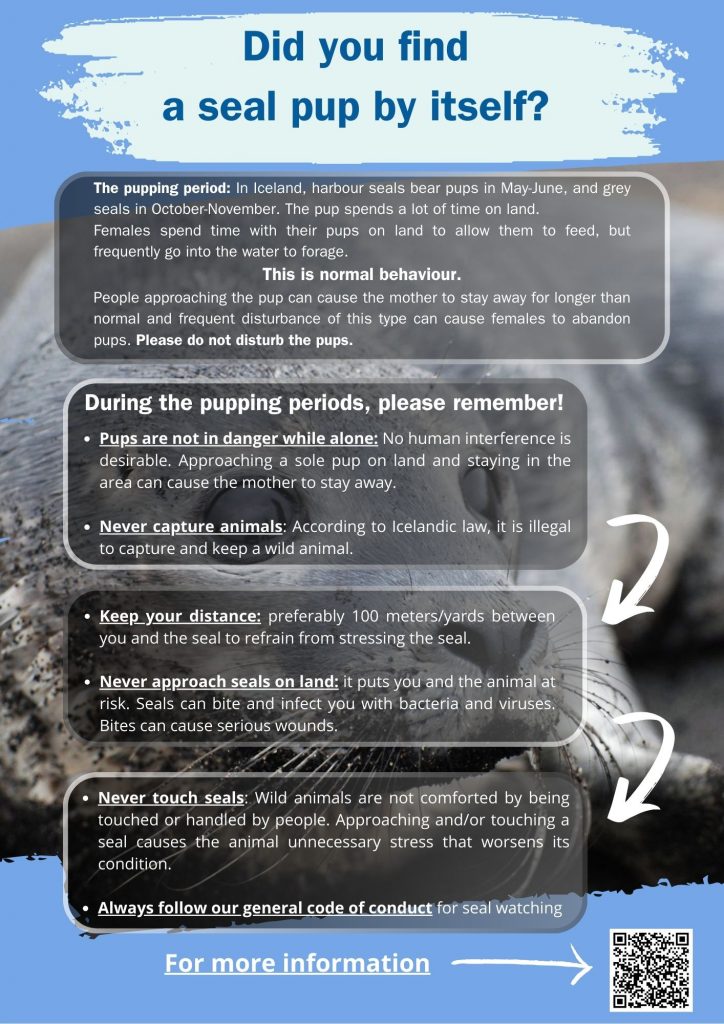




Please welcome Colin, who is currently doing an internship at the Icelandic Seal Center in collaboration with the Marine and Freshwater Research Institute and is supervised by Dr. Sandra Granquist. Colin is a third-year undergraduate student in environmental science and terrestrial resource management at the University of Washington, Seattle. He is interested in climate modeling and researching the impact of climate change on marine ecosystems. Throughout his internship at the Icelandic Seal Center, Colin will analyze the potential changes in habour seal haul-out patterns and site conditions under climate change projections (CMIP6 projections), as well as regularly assist in fieldwork and seal surveys. His aim of the research study is to guide conservation actions to ensure sustainable management of harbour seal populations in Iceland amid the ever-changing climate.

Please welcome Nicola Mauro, who is doing an internship with us at the Icelandic Seal Center in collaboration with the Marine and Freshwater Research Institute. Nicola is a master student in Biology of organisms and ecology at UCLouvain (Belgium). In his internship, Nicola will be monitoring the abundance of harbour and grey seals with our research team. He will among others look at environmental and anthropogenic factors that might affect the behaviour and spatial distribution of the harbour seal.

A new paper about trends in the Icelandic harbour seal population was recently published. The title of the paper is “The Icelandic harbour seal (Phoca vitulina) population: trends over 40 years (1980–2020) and current threats to the population”. Sandra Granquist, Head of Seal research department and senior reseacher at the Marine and Freshwater Research Institute of Iceland is the author of the paper. Below is a summary of the paper (abstract) and a link to the paper.
Abstract:
Regular harbour seal (Phoca vitulina) population censuses are necessary to monitor fluctuations in the population size and to inform seal management. In this paper, the status of the Icelandic harbour seal population is presented, along with trends in the population over a 40-year period. In total, 13 full aerial censuses were carried out during the moulting season (July-August) between 1980 and 2020. The most recent census from 2020 yielded an estimate of 10,319 (CI 95%= 6,733-13,906) animals, indicating that the population is 69.04% smaller than when systematic monitoring of the population commenced in 1980 (33,327 seals). The observed decrease puts the population on the national red list for threatened populations. Trend analyses indicate that most of the decline occurred during the first decade, when the population decreased about 50% concurrently with large human-induced removals of harbour seals. After that point, the population decline slowed down but continued, and currently the population seems to fluctuate around a stable minimum level. The sensitive conservation status of the population underlines the need to assess and sustainably manage current threats to the population, including human-induced removals, anthropogenic disturbance, and various environmental factors such as contaminants, climate change and fluctuation in prey availability. Furthermore, it is urgent to continue regular censuses and to increase monitoring of population demographic factors.
A new paper titled Gender difference in biospheric values and opinions on nature management actions: The case of seal watching in Iceland was published in the peer-reviewed journal Ocean & Coastal Management. It can be accessed here. It was written by Cécile M. Chauvat, who works for the Northwest Iceland Research Center in collaboration with the Icelandic Seal Center, Dr. Sandra M. Granquist from the Marine and Freshwater Research Institute and Head of the seal research department at the Icelandic Seal Center, and Dr. Jessica Aquino, Assistant Professor in the department of Rural Tourism at Hólar University.
Abstract
Gender differences in biospheric value orientation and opinions on wildlife management have the potential to be used as a management tool in wildlife watching settings. This research note builds on a dataset from Chauvat et al. (2021) to investigate gender differences in biospheric value orientation and opinions on seal watching management of visitors at seal watching sites post hoc. Questionnaires (n = 597) were collected at three sites in Northwest Iceland. It was found that when genders were compared, women had stronger biospheric value orientations, were more aware of potential anthropogenic impacts on seals, believed to a higher extent that regulations were useful in terms of decreasing impact, and were more positive towards most management actions suggested in the questionnaire. It is argued that further understanding of the gender dynamics regarding pro-environmental attitudes may be a valuable element in the context of sustainable wildlife tourism management.